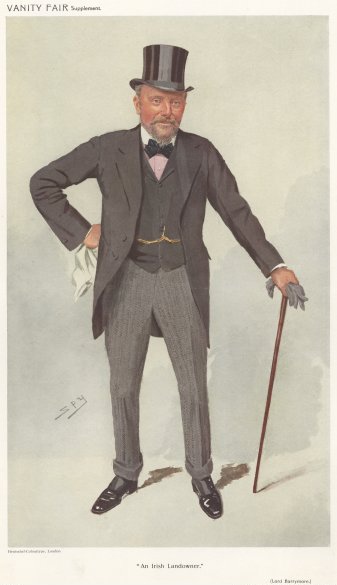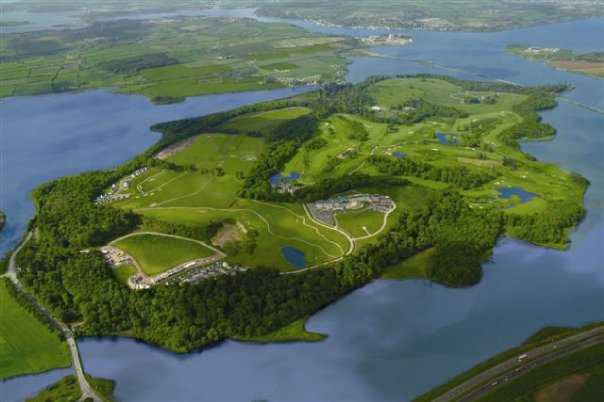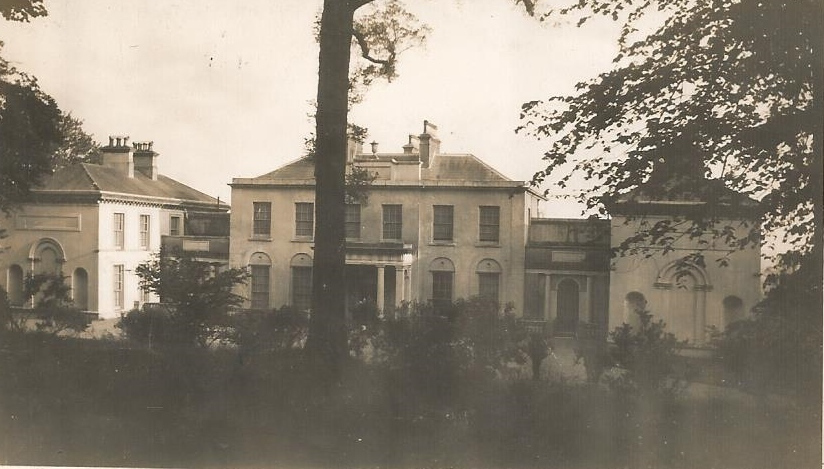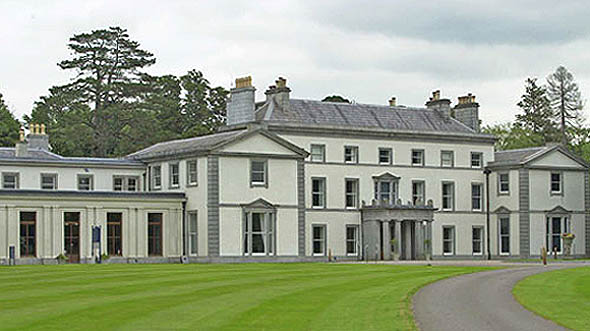
Arthur Hugh Smith-Barry, 1st Baron Barrymore, PC (17 January 1843 – 22 February 1925), was an Anglo-Irish Conservative politician.
He was the son of James Hugh Smith Barry, of Marbury, Cheshire, and Fota Island, County Cork, and his wife Eliza, daughter of Shallcross Jacson. His paternal grandfather John Smith Barry was the illegitimate son of James Hugh Smith Barry, son of the Hon. John Smith Barry, younger son of Lieutenant-General The 4th Earl of Barrymore (a title which had become extinct in 1823) He was educated at Eton and Christ Church, Oxford.
Smith-Barry entered Parliament as one of two representatives for County Cork in 1867, a seat he held until 1874. Smith-Barry remained out of the House of Commons for the next twelve years but returned in 1886 when he was elected for Huntingdon, and represented this constituency until 1900. He was also High Sheriff of County Cork in 1886 and was tasked by Arthur Balfour to organise landlord resistance to the tenant Plan of Campaign movement of the late 1880s. He was sworn of the Irish Privy Council in 1896. In 1902 the Barrymore title held by his ancestors was partially revived when he was raised to the peerage as Baron Barrymore, of Barrymore in the County of Cork.
Smith-Barry played two first-class cricket matches for the Marylebone Cricket Club, playing once in 1873 and once in 1875.
Lord Barrymore married firstly Lady Mary Frances, daughter of The 3rd Earl of Dunraven and Mount-Earl, in 1868. After her death in 1884 he married secondly Elizabeth, daughter of U.S. General James Wadsworth and widow of Arthur Post, in 1889. There were children from both marriages, a son from the first, and a daughter from the second. Lord Barrymore died in London in February 1925, aged 82, and was cremated at Golders Green Crematorium. His only son James had died as an infant in 1871 and consequently the barony became extinct on Barrymore’s death. The Irish family seat of Fota House was acquired by his daughter from his second marriage, the Hon. Dorothy Elizabeth Bell (1894–1975), wife of Major William Bertram Bell. Lady Barrymore died in May 1930.

On the death of Arthur Hugh Smith Barry in 1925, the estates, which were entailed, passed to his brother James Hugh Smith Barry and on his death it passed to James Hugh’s son Robert Raymond Smith Barry. In 1939 the estate of Fota Island and the ground rents of areas was acquired by Arthur Hugh’s daughter, The Hon. Mrs. Dorothy Bell for the sum of £31,000. On her death, in 1975, it was left to her daughter Mrs. Rosemary Villiers, and Fota House is now the property of The Irish Heritage Trust.


